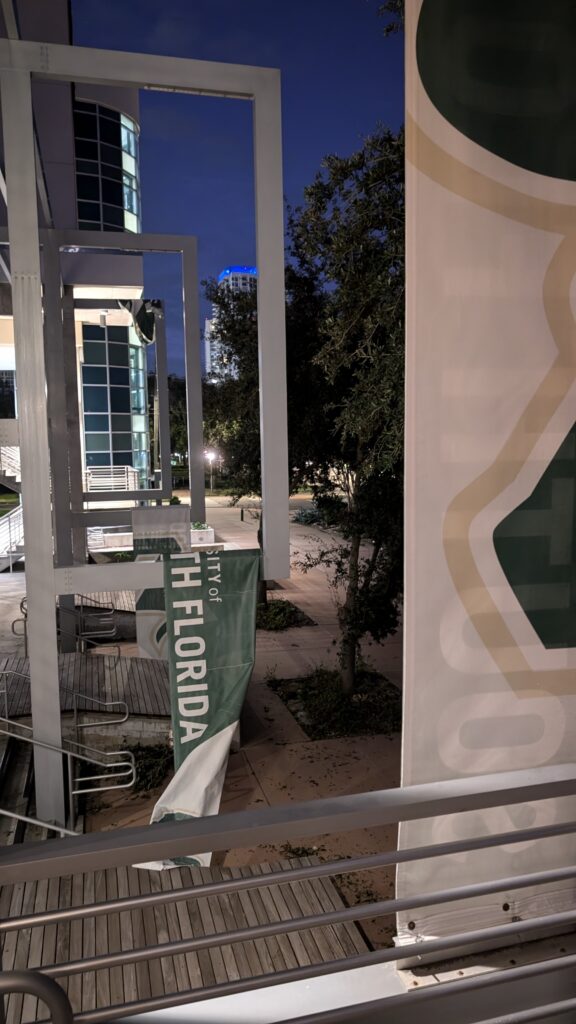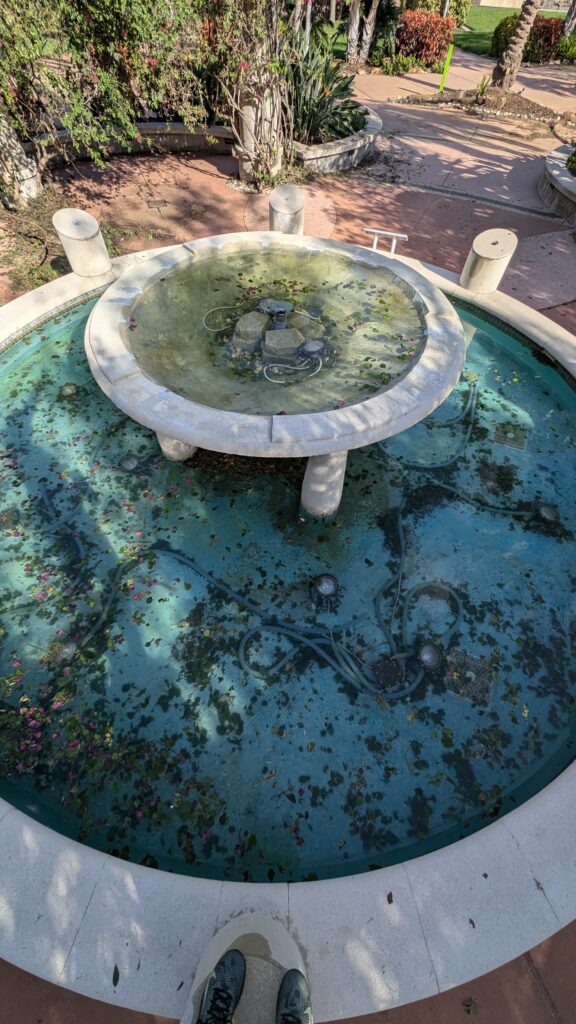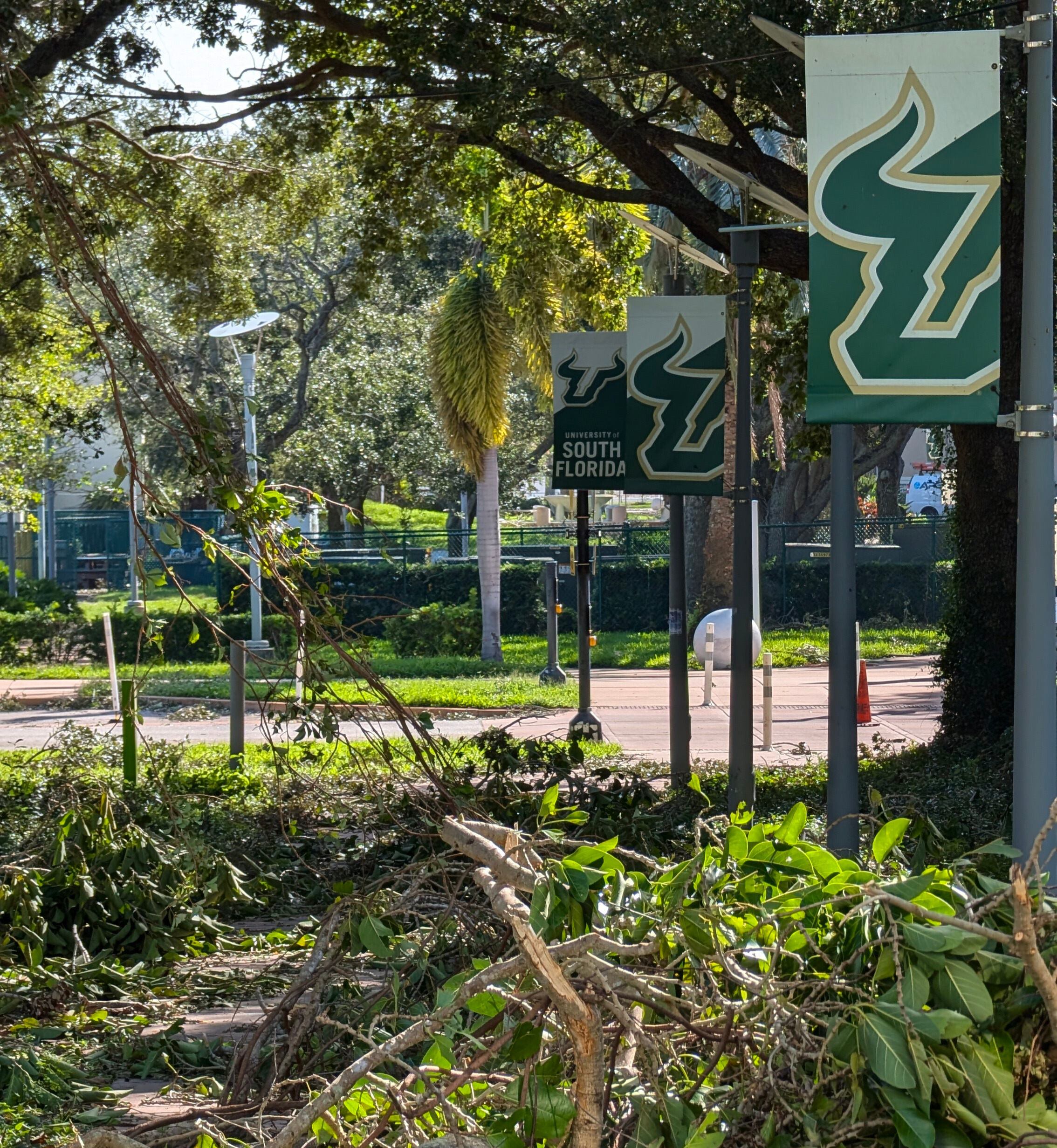Photo courtesy of Eddie Allen
By Riley Benson
As Hurricane Milton has now come and gone, USF continues monitoring the storm’s effects across all campuses.
All campuses, including residence halls are closed until at least Monday, Oct. 14, with classes held remotely on that same day.
The university is also urging students to not return to campus until they have been notified that it is safe to do so.
“We hope to be able to reopen residence halls and dining before Monday, Oct. 14. Residence halls and dining in St. Petersburg may not be able to open prior to Monday as the campus is under a boil water notice from the city until then,” the university wrote in a statement today.

In the early hours of Thursday, Oct. 10, Pinellas County officials notified residents that the county had to shut off drinking water due to major water breaks, with repairs completed later that day. However, the city remains under a boil water notice until Monday, Oct. 14.
According to the Centers for Disease Control and Prevention (CDC), the best way to boil water safely in a situation like this is to bring water to a full rolling boil for one minute and allow the water to cool before use.
Meanwhile, in Pinellas County, more than 72% of residents are without power, as well as almost 70% of residents in Hillsborough County without power. Over two million people are without power throughout Florida.
According to Duke Energy, power outages have been reported at the USF St. Petersburg campus, specifically at Pelican Apartments, or “RHO.” On the website, it’s reported that the outage in the residential building is planned to have the “majority be restored by Tuesday, Oct. 15 at 11:59 p.m.”

Officials also stated that at least two people died during the storm in Pinellas County, and 17 people statewide.
According to the City of St. Petersburg, at the Albert Whitted Airport tower peak winds 101 mph. The airport is located across the street from the USF St. Petersburg Student Life Center parking lot.
The city also reported approximately 18 inches of rain, with no storm surge, which was originally estimated to be as high at 8–12 feet in St. Petersburg.

Locally, damage was seen to many major landmarks, like part of the roof of Tropicana Field being torn, which was used during the storm as an emergency management services site that housed thousands of cots for emergency personnel.
Luckily, there were no first responders on site, all essential personnel in the building were accounted for.
Further damage was caused in Downtown St. Petersburg as a construction crane used to build a new high-rise building at 400 Central Avenue collapsed and damaged the side of the building that houses the Tampa Bay Times offices.
During Hurricane Helene just two weeks ago, there were previous issues caused by cranes, as the high winds during the storm caused one of the machines to spin.
In Clearwater, over 500 people had to be rescued from a flooded apartment complex, as the during the night of the storm residents had gotten trapped in the building from the rising waters and submerged vehicles.
Throughout Pinellas, many saw firsthand the damage, winds and flooding the deadly storm had brought. State-wide, at least 19 tornadoes broke out and destroyed homes in multiple counties, and areas outside of flood zones, like the USF Tampa campus and Fowler Avenue, experiencing flooding and extremely high waters.



